When disaster strikes, will you be prepared?
You likely already have a list of all the foods you need to grow and stockpile, as well as the emergency and first aid supplies you need, should an emergency occur. However, resin is the ingredient you should consider keeping on hand – here’s why.
Resin is the secretion from a tree that is caused by a cut or break. Trees secrete resin to seal up injuries and reduce the likelihood of infection from disease.
Most often gathered from pine trees, there are 25+ survival uses of resin you’ve got to consider.
Waterproof Shoes
Impervious to water, pine resin can be used to treat shoes to make them waterproof. Heat it to liquid form, then apply as needed.
Make a Glue
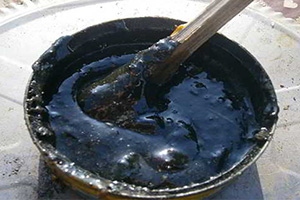 By heating resin to liquid form and adding some crumbled charcoal from your fire, you can make your own pine resin glue.
By heating resin to liquid form and adding some crumbled charcoal from your fire, you can make your own pine resin glue.
The easiest way to do this is to melt down some pine sap by placing it over a hot fire. While it’s melting, crush up some bits of charcoal into a fine powder with a stick or rock.
You will need about one part charcoal to three parts pine resin.
Once the resin has melted, you can mix in the charcoal. It will harden as it cools. To use the glue, simply heat it back up and apply it to whatever you need.
Repair Holes in Canvas
Resin can even be used to repair holes in canvas or heavy nylon.
Simply lay the material flat, heat it to liquid form, then apply using the fibrous end of a stick.
Speed Heal a Blister
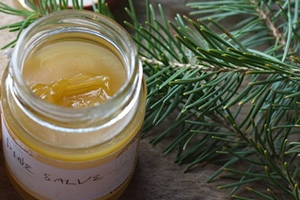 When applied to a blister, resin can not only make it heal more quickly but can also stop it from getting infected.
When applied to a blister, resin can not only make it heal more quickly but can also stop it from getting infected.
To make a salve, simply heat some resin to an oil by using a simmering double boiler.
Heat it on low until the resin melts, then strain it through a coffee filter.
Add some beeswax and return to a double boiler, heating until the mixture is fully melted and combined.
Treat a Wound
Resin can be used to prevent bacterial infection in a wound and also to help it heal. Once applied to a cut, it will stop the growth of bacteria.
Leave It in place on the wound and reapply as needed.
Related: How To Make Antiseptic Sugardine To Treat Wounds And Inflammation
DIY Fish Hooks
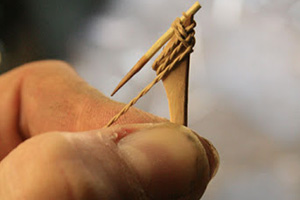 You can use the pine resin glue described above to make your own fish hooks in a pinch!
You can use the pine resin glue described above to make your own fish hooks in a pinch!
There are several different strategies you can employ for this hack, but the easiest way is to take a section of thorns from a bush. This will be the hook section of your fishhook.
You will then use a bit of cordage or thread to lash your hook together. In a true survival situation, you can even use something like dried nettle fibers.
The pine resin will hold the hook together, serving as an adhesive. You will also need a feather that will be used as the eye of the hook. You’ll strip the feather in half and attach the thorns, using the pine resin to keep everything in place.
Use Pine Resin Glue to Stop Splintering
Use the pine resin glue you made as described in the steps above to apply them to arrows and get them to harden.
You can also use these on the tips of fishing or hunting spears.
Illumination – or Pine Resin “Candle”
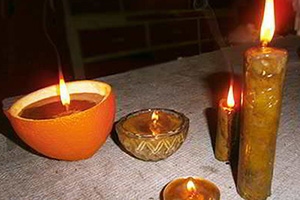 Pine resin can be used to create a lamp.
Pine resin can be used to create a lamp.
Simply fill a stone with a depression (you can also use a large shell) with resin.
You can use some dried moss or a twisted bit of cloth as a wick, which will then ignite the resin.
Heat
If you are able to find a larger container, you can follow the same steps you’d use to create the pine resin “candle” to offer a source of portable heat.
Make a Tea
Pine tea may not sound appetizing, but it is loaded with antioxidants and anti-inflammatory agents that will make you feel like a million bucks after you have a cup!
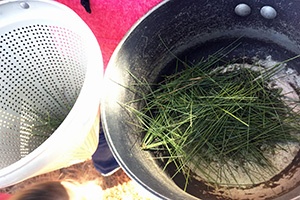 It is incredibly easy to make. You can use the entire branch, too, to help you make the most of the heavenly aroma of the pine needles.
It is incredibly easy to make. You can use the entire branch, too, to help you make the most of the heavenly aroma of the pine needles.
Simple rinse off the branch to get rid of any dirt, then pluck the needles from the branch.
Steep them in a small mug or pot, then chop them into smaller pieces. Bring three cups of water to a simmer, then remove from the heat and add half a cup of needles.
Don’t boil the mixture, as this will break down vitamin C and lead to an unpleasant taste in your tea.
Calm a Sore Throat
Rather than reaching for the cough drops, give pine resin a try to soothe your sore throat. This is a common medicinal treatment favored by Native Americans.
Just chew on a bit of pitch to make you feel better!
Stop Bleeding
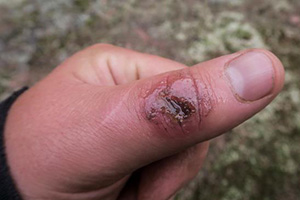 Not only is pine resin a great treatment for preventing infection and sealing up a wound to keep dirt and debris out, but it can also quickly stop bleeding.
Not only is pine resin a great treatment for preventing infection and sealing up a wound to keep dirt and debris out, but it can also quickly stop bleeding.
Just dab some pine resin on your cut and it should stop the flow.
Related: Best Natural First Aid: Stops Bleeding In 10 Seconds
Substitute for Stitches
If you have a deep cut that would normally require stitches, you may want to use pine resin to seal it up.
It will offer cross-sectional strength when combined with a bit of hair as a binding agent.
Eat it to Reduce Inflammation
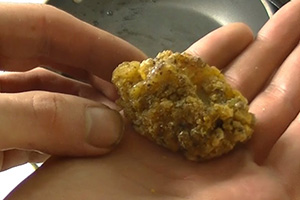 Again, pine resin won’t taste the best. However, if you make a habit of eating a nibble or two on a regular basis, it can help reduce swelling and inflammation.
Again, pine resin won’t taste the best. However, if you make a habit of eating a nibble or two on a regular basis, it can help reduce swelling and inflammation.
Some preppers swear by adding basic ingredients like honey, maple syrup, or molasses to their pine resin to help improve the flavor.
Calm an Abscess
Whether it’s an external abscess or an abscessed tooth that’s causing you misery, resin can help.
For an abscessed tooth, simply chew on a bit of resin to heal it up quickly.
Start a Fire
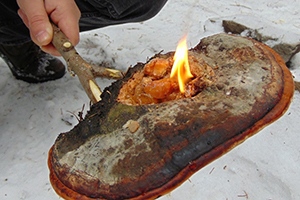 If you’ve ever burned a pine log, it will probably come as no surprise that pine resin is a great way to get things going.
If you’ve ever burned a pine log, it will probably come as no surprise that pine resin is a great way to get things going.
It is incredibly flammable and can even help you light wet wood.
Related: How to Get a Year Supply of Firewood for $10
Make a Torch
Soak a bandana in liquid pine sap, then wrap it around a stick and set it on fire.
You’ve got a portable torch that you can take with you wherever you need to go!
Patch Holes in Water Containers
Make a pine resin glue.
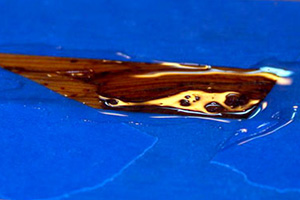
Then, use a stick to apply the glue to holes in water containers.
This is an excellent strategy for preppers who want to be more self-sufficient, as this technique will allow you to repair your things rather than running to the store to buy new ones, cutting out unnecessary expenses in the process.
Patch a Tire
In a pinch, pine resin can even be used to patch a tire to get you home. How’s that for resourceful?
Heal Rheumatoid Arthritis
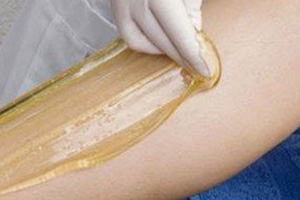 Because it is so powerful as an anti-inflammatory, pine resin can also be used to treat arthritis.
Because it is so powerful as an anti-inflammatory, pine resin can also be used to treat arthritis.
This is vital if your joints are aching and you need to keep moving!
Just apply some resin to your aching body as needed, wherever the pain is.
Treat a Rash
From poison ivy to burdock, there are all kinds of plants out there that can really make you itch!
Consider using pine resin to treat a rash – it’s far better than the store-bought alternatives
Heal a Stomach Ulcer
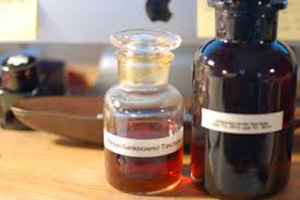 A liquid pine resin (heated up and combined with water) will create a tonic that Native Americans once used to treat stomach ulcers.
A liquid pine resin (heated up and combined with water) will create a tonic that Native Americans once used to treat stomach ulcers.
Related: Lost Native American Survival Skills
It can also be used to calm sore throats and to treat symptoms of the common cold.
Extract a Stinger
If you’ve been stung by a bee or wasp, you can put some over the inflamed area and allow it to harden.
When you remove the resin, the stinger should come right out with it.
Make a Chewing Gum
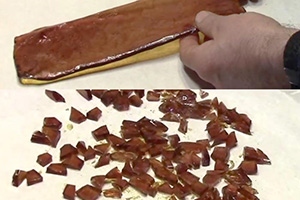 While this doesn’t seem like a survival use of pine resin at first glance, the reality is that a pine chewing gum can actually provide a valuable source of nutrients that can serve as a placeholder until you can get to your next mealtime. Just combine a bit of honey and beeswax for an edible mixture.
While this doesn’t seem like a survival use of pine resin at first glance, the reality is that a pine chewing gum can actually provide a valuable source of nutrients that can serve as a placeholder until you can get to your next mealtime. Just combine a bit of honey and beeswax for an edible mixture.
Remove a Sliver
Slivers aren’t just annoying – they can be dangerous and even deadly if they get infected.
Soften some pine resin and form it over the embedded sliver. Let it harden, then pull it away.
Find Your Way
One more unique use of pine resin is that you can use it to help mark your way when you’re out in the woods.
Leaving large globs of pine resin behind you as a “trail of breadcrumbs,” ideally on trees or on other landmarks, will help you navigate so you don’t end up walking in circles.
You can mix in charcoal or other ingredients to help it stand out more brightly in the wilderness.
Pine resin might not seem like anything but a sticky, aromatic mess.
However, it offers plenty of benefits to the average prepper – many of which you may not have yet considered.
Try out these tips and you’ll be prepared for whatever sticky situation life happens to throw at you!
No comments:
Post a Comment